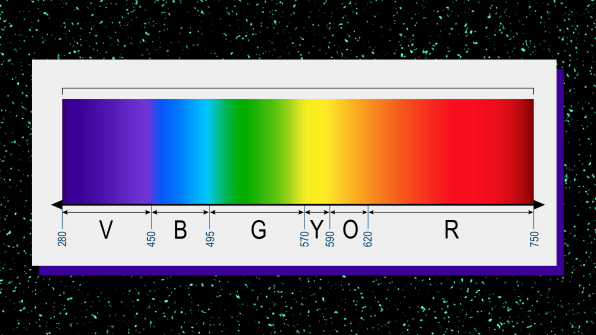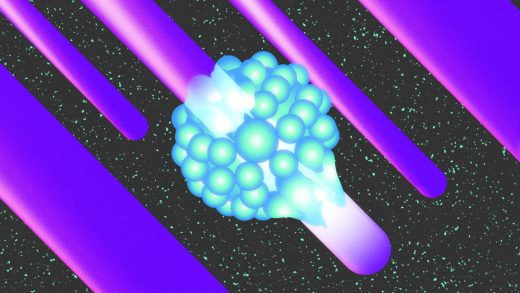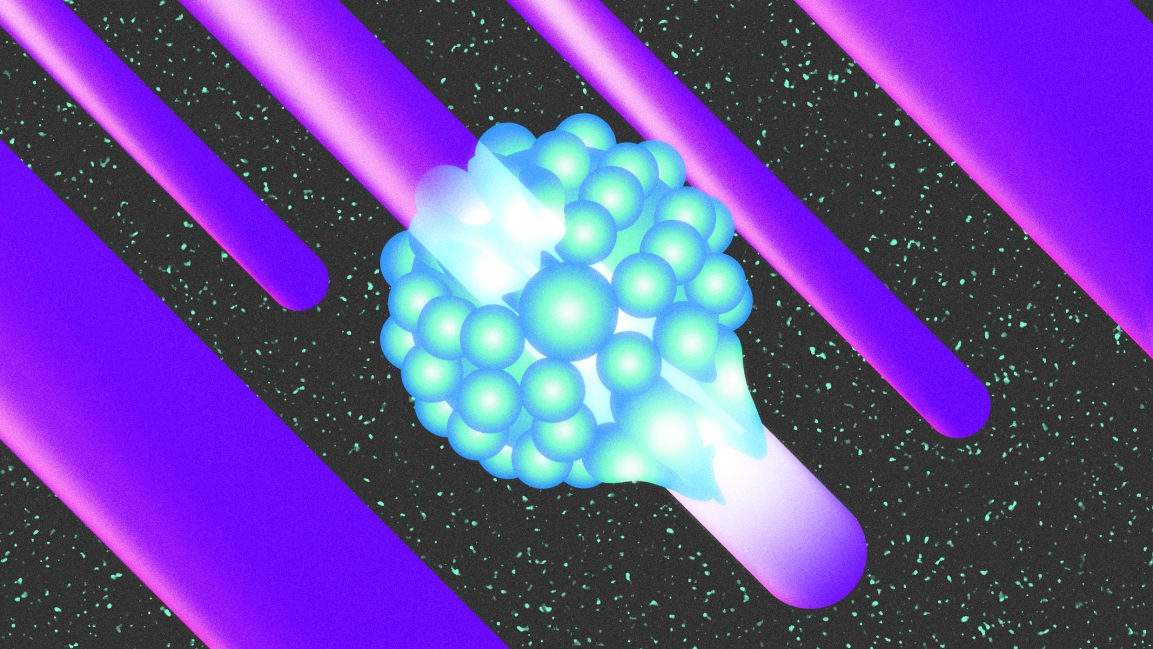Trump wants to treat COVID-19 with UV light. Here’s why that wouldn’t work
There is no cure for COVID-19, no way to mitigate its virus in our bodies other than our own antibodies. But that hasn’t stopped people from suggesting otherwise. After writing about copper’s ability to kill the virus behind COVID-19, I had a reader reach out, asking if consuming copper might cure the disease. (Copper is toxic.) Similarly, upon hearing that ultraviolet waves of light, which are projected by the sun, could kill the virus behind COVID-19, President Trump began speculating as to how it might purify our bodies at his press conference on Thursday.
“So supposing we hit the body with a tremendous—whether it’s ultraviolet or just a very powerful light—and I think you said that hasn’t been checked because of the testing. . . . And then I said, supposing you brought the light inside the body, which you can do either through the skin or some other way.”
This was the latest in a wave of impossible-to-follow, pseudoscientific claims by Trump. Attempting to unpack and scrutinize its logic is an exercise in futility. But it does serve as an important moment to clarify what ultraviolet (UV) light, as both a natural resource from the sun and a technology harnessed by new bulbs, can provide to us during the COVID-19 crisis and what it cannot.
For clarity, we spoke to Andrea Martin Armani, the Ray Irani Chair in Engineering and Materials Science and Professor of Chemical Engineering and Materials Science at the USC Viterbi School of Engineering, an expert on light and biology, who has developed several new biosensor technologies with lasers and UV light.
Needless to say, Armani does not recommend anyone expose the inside or outside of their body to UV light in an attempt to prevent or cure COVID-19.
What is UV light?
Ultraviolet light is part of the electromagnetic spectrum, falling between x-rays and the visible light you see. Its wavelengths are shorter and more powerful than visible light.

UV light comes from the sun, right?
Yes. The sun rains UV light onto Earth all the time, and Earth is constantly bombarded by waves from the entire electromagnetic spectrum. But “not every wavelength can make it into our atmosphere . . . for a whole range of reasons,” says Armani. Lucky for us, our atmosphere filters out many microwaves from space that could be harmful to our health. It also filters a certain type of UV light—UVC—which happens to be the most effective part of the UV spectrum for killing pathogens such as COVID-19.
UVC?
Yes, so ultraviolet light comes in three flavors, based upon the specific wavelengths. UVA and UVB are around us any time we stand under the sun. They are both natural disinfectants, killing viruses, bacteria, and our own cells indiscriminately by breaking down their DNA—though UVB is more aggressive in this regard than UVA. When you get a sunburn, the UV light has killed your skin cells. That’s why sunblock is formulated to block UVA and UVB light, specifically.
Thanks to UV, sunlight has been proven to kill the virus behind COVID-19, though not effectively enough to wipe it out entirely. The purifying power of UV light has also been harnessed in specialized lightbulbs used to purify hospital rooms and water sources, but that’s a different type of UV—the aforementioned UVC.
What makes UVC so special?
“It actually has a very specific mechanism. When you think about life and replicating life, you go to the fundamental building blocks,” says Armani. UVC breaks down DNA and RNA so that they can no longer replicate. “It’s disrupting the very heart of bacteria or viruses,” she says.
You probably remember from biology that DNA/RNA are made of nucleic acids that pair together. There are two groups of these nucleic acids known as purine and pyrimidine bases. “UVC disrupts the pyrimidines,” Armani explains, because the specific frequency of UVC resonates with the nucleic acids, destroying them (with more effectiveness than UVA or UVB). “Since it’s able to go in and destroy half of RNA or DNA, it’s able to destroy replication of viruses and bacteria. They can’t reproduce and so they die.”
The way I imagine this is that, if your DNA/RNA is a zipper, and your nucleic acids pair together like the zipper’s teeth, UVC knocks out a bunch of these teeth.
Wow, this UVC stuff is powerful—we should use it!
We do! “UVC has been used in water and air purification since the late 1990s,” says Armani. “The idea that UVC could actually disrupt DNA and RNA was discovered in the late 1880s. The concept has been known for a very long time!” It’s used in sealed tanks at water treatment facilities, sealed ducts in HVAC systems, and even some personal air purifiers. More recently, UVC light has been adopted in surgical rooms to blast the entire room with light and purify it within minutes.
Armani has even built a UVC box in her home, which isn’t much more than a closable box with a UVC light inside. She uses it to sterilize deliveries as they come in. It’s the same sort of technology that’s currently sterilizing N95 masks for reuse.
Why not add UVC lights to my house then?
Well, the catch is that UVC light, like UVA and UVB, is an indiscriminate killer. Enough UVC light—the level of power used to sterilize surgical rooms—would burn you and potentially give you skin cancer. That’s why it’s only being used in controlled environments. Humans don’t enter the sealed water purification tanks that are being blasted with UVC light. Motion sensors ensure no one is in a surgical room when the UVC light goes on. Some handheld wands are now on the market that sterilize objects with UVC light. They work, but their lower power means you need to hold them an inch away from a surface you’re sterilizing for half a minute or longer. They aren’t all that practical for sterilizing all that much around you.
Is there any hope for using UVC more broadly?
New research out of Columbia University points to something called “far-UVC.” It’s basically one specific wavelength in the larger UVC spectrum, around 220nm, that researchers claim can kill the virus behind COVID-19 but not penetrate human skin or eyes. If possible, that would mean you could simply put far-UVC light bulbs in your office or house and know it was being sterilized.
Steven Denbaars, a professor at UC Santa Barbara who specializes in lighting, tells us the research is “very interesting and deployable technology if they can get it to work.” But Armani is not convinced, arguing that far-UVC isn’t fundamentally different enough from UVC to be safe. “The idea of directly exposing people with UVC is a very bad idea and would have numerous negative health effects,” she says. “The negative effects of direct UVC exposure on humans is backed up by decades of medical research.”
We reached out to the team at Columbia but had not heard back by the time of publishing.
So is there something to what Trump said about blasting humans with light to cure COVID-19?
I’ll punt this one to Armani.
“Technically, yes, there are ways to bring light (in general) into the body. There are actually medical treatments based on bringing [non-UV] into the body at very, very precise locations. For example, one approach for breaking up kidney stones is ‘blasting’ them with a high-power laser,” she says. “However, that is typically a green laser—not a UVC laser. And the laser only hits the kidney stone. So, no, there isn’t a way to bring UVC light into your body and hit everywhere at once.”
And if you did manage to hit every cell in your body with enough UVC, you’d break down the DNA and kill them, too. So, yes, that makes Trump’s UV light cure every bit as sound as drinking bleach.
(Do not drink bleach either.)
(59)



